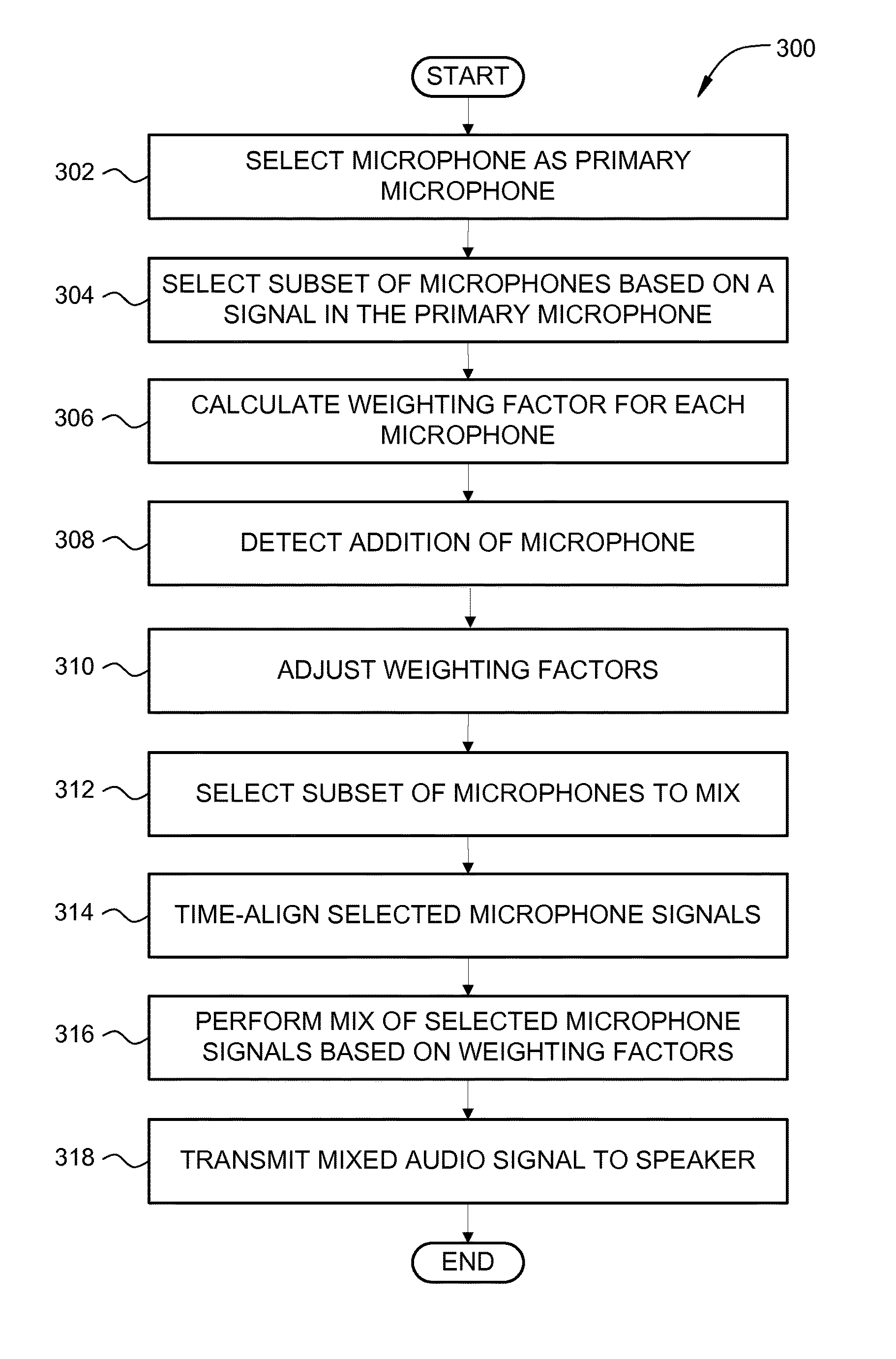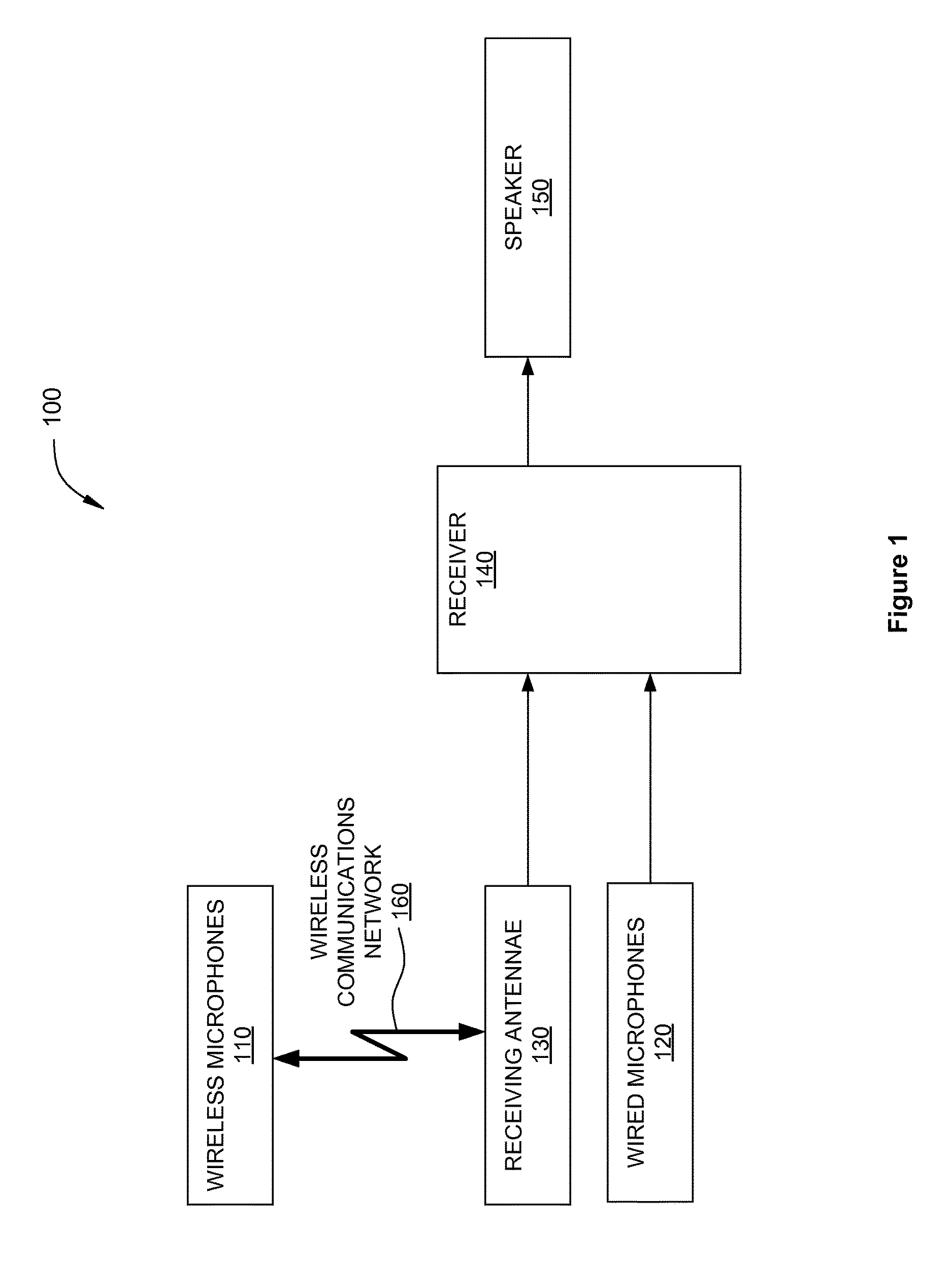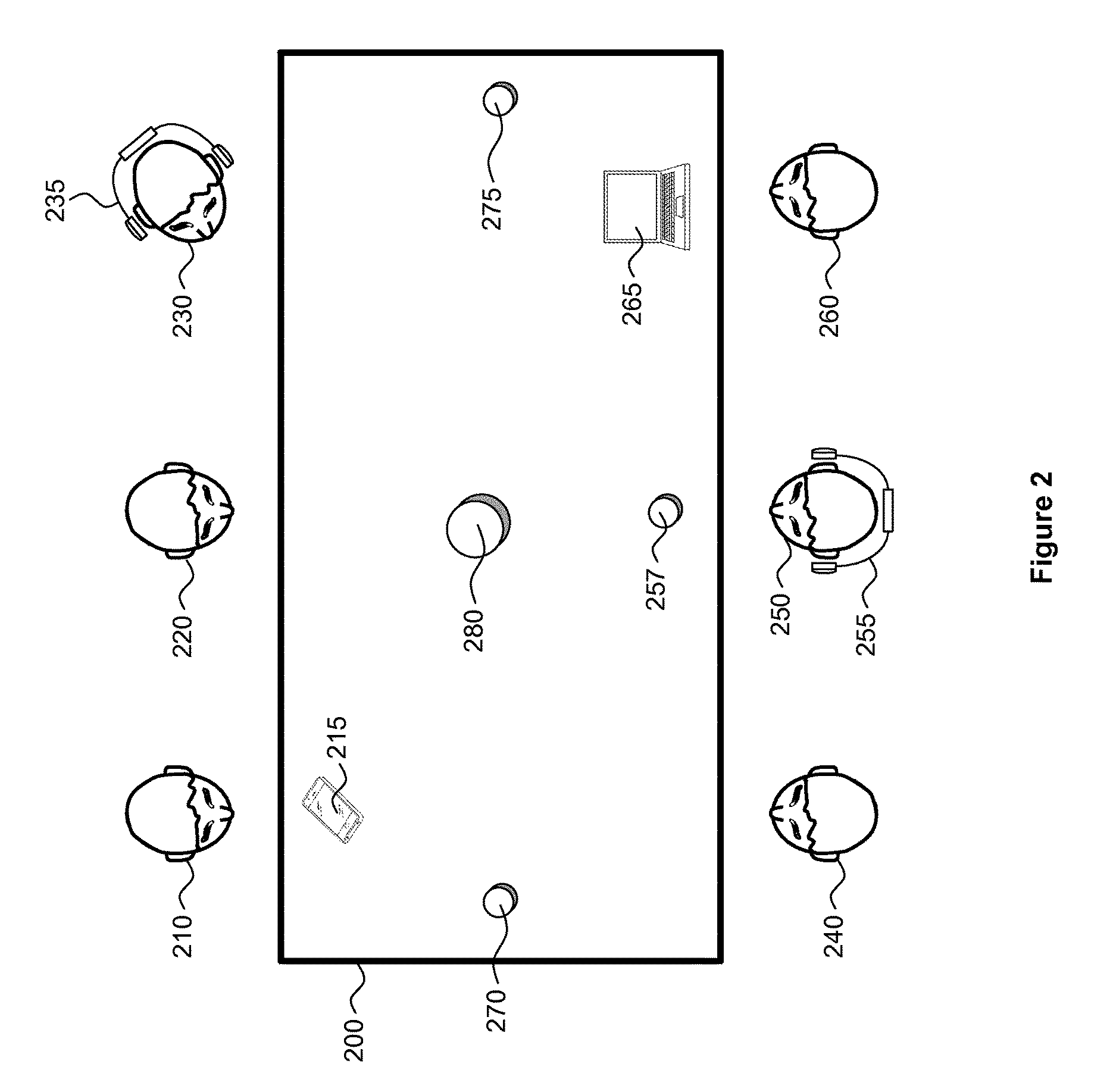Audio enhancement via opportunistic use of microphones
a technology of opportunistic use and enhancement, applied in the field of audio signal processing, can solve the problems of reducing the quality of the audio received at the microphone, reducing the range of audio, and enhancing the sound of the device, so as to achieve the effect of enhancing the sound for certain individuals
- Summary
- Abstract
- Description
- Claims
- Application Information
AI Technical Summary
Benefits of technology
Problems solved by technology
Method used
Image
Examples
Embodiment Construction
[0002]Embodiments of the present disclosure relate generally to audio signal processing and, more specifically, to audio enhancement via opportunistic use of microphones.
[0003]Description of the Related Art
[0004]Audio enhancement is often used to improve the ability of specific individuals to hear particular people speaking or other sound sources in a group setting, such as a group meeting in a conference room. In one example, and without limitation, a hearing impaired participant could listen to the person speaking via hearing aids or similar listening devices placed into one or both ears of the participant. Such hearing aids would typically have a built-in microphone to receive sound present in the region of the outer ear, and an amplifier and speaker for the purpose of amplifying sounds and projecting the amplifies sounds into the inner ear. In another example, and without limitation, a remote participant could listen to the person speaking via a speakerphone or other teleconfere...
PUM
 Login to View More
Login to View More Abstract
Description
Claims
Application Information
 Login to View More
Login to View More - R&D
- Intellectual Property
- Life Sciences
- Materials
- Tech Scout
- Unparalleled Data Quality
- Higher Quality Content
- 60% Fewer Hallucinations
Browse by: Latest US Patents, China's latest patents, Technical Efficacy Thesaurus, Application Domain, Technology Topic, Popular Technical Reports.
© 2025 PatSnap. All rights reserved.Legal|Privacy policy|Modern Slavery Act Transparency Statement|Sitemap|About US| Contact US: help@patsnap.com



